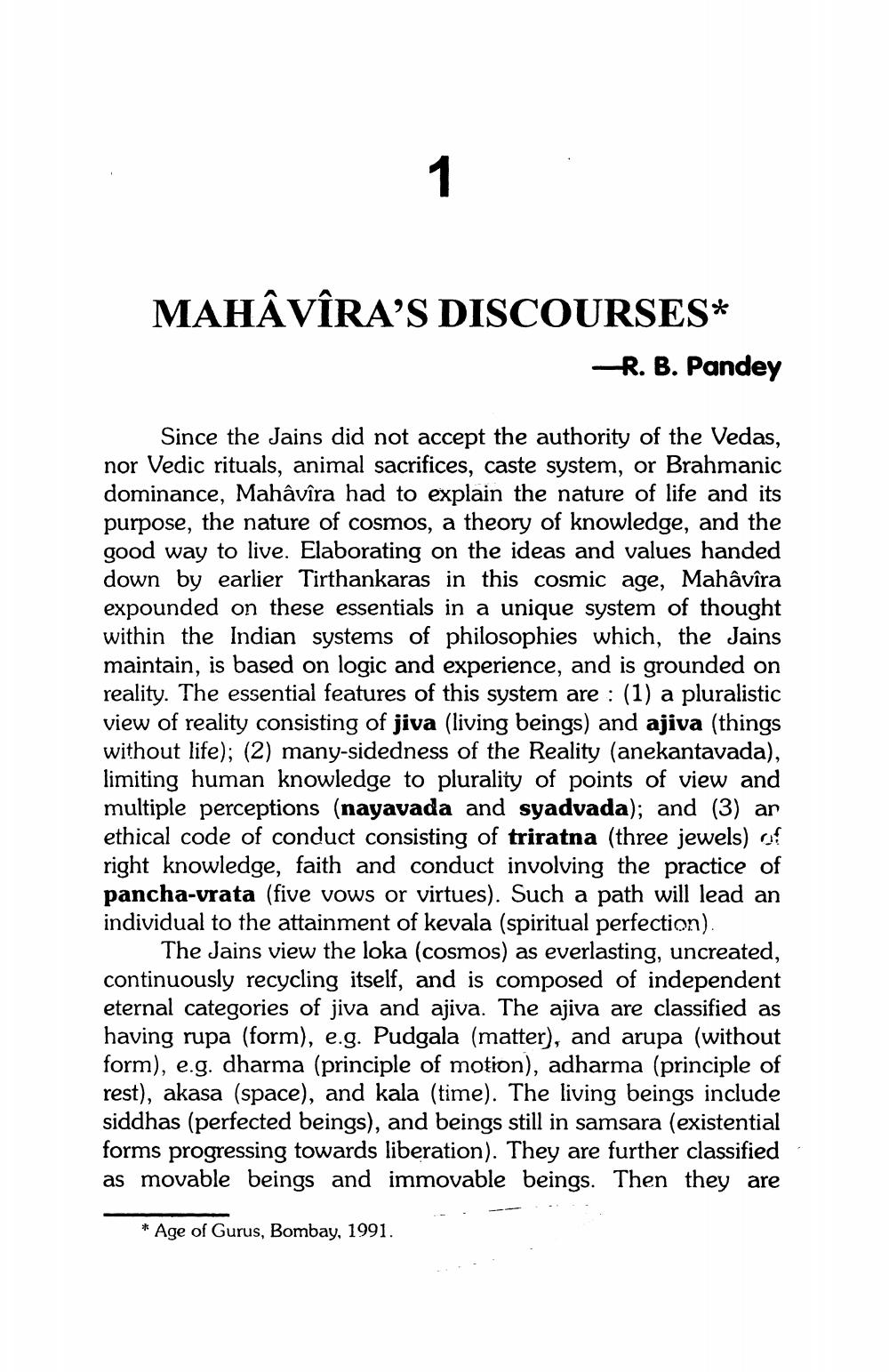________________
1
MAHÂVÎRA'S DISCOURSES*
-R. B. Pandey
Since the Jains did not accept the authority of the Vedas, nor Vedic rituals, animal sacrifices, caste system, or Brahmanic dominance, Mahâvîra had to explain the nature of life and its purpose, the nature of cosmos, a theory of knowledge, and the good way to live. Elaborating on the ideas and values handed down by earlier Tirthankaras in this cosmic age, Mahâvîra expounded on these essentials in a unique system of thought within the Indian systems of philosophies which, the Jains maintain, is based on logic and experience, and is grounded on reality. The essential features of this system are: (1) a pluralistic view of reality consisting of jiva (living beings) and ajiva (things without life); (2) many-sidedness of the Reality (anekantavada), limiting human knowledge to plurality of points of view and multiple perceptions (nayavada and syadvada); and (3) ar ethical code of conduct consisting of triratna (three jewels) of right knowledge, faith and conduct involving the practice of pancha-vrata (five vows or virtues). Such a path will lead an individual to the attainment of kevala (spiritual perfection).
The Jains view the loka (cosmos) as everlasting, uncreated, continuously recycling itself, and is composed of independent eternal categories of jiva and ajiva. The ajiva are classified as having rupa (form), e.g. Pudgala (matter), and arupa (without form), e.g. dharma (principle of motion), adharma (principle of rest), akasa (space), and kala (time). The living beings include siddhas (perfected beings), and beings still in samsara (existential forms progressing towards liberation). They are further classified as movable beings and immovable beings. Then they are
*Age of Gurus, Bombay, 1991.




